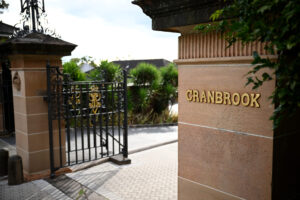
Private schools are competing to see who can boast the most luxurious accoutrements, and the tax-deductions they can claim on constructing buildings are helping them do it. The Scots College is awaiting construction of its new library, which will resemble a Scottish Baronial castle. At one point, they had a hypoxic chamber for altitude simulation sports training.
Newington College has its own rifle range, and Knox Grammar boasts an adjustable orchestra pit. Many of Sydney’s elite private schools have camps that sit on prime acreage outside the city. None of these things are needed for students to complete the required national curriculum, yet the public helps pay for much of what they build.
In 2024, the Commonwealth Government will spend an estimated $29.1 billion on schools in Australia. More than half of this – $17.8 billion – will go to private schools, including those with Olympic sized indoor swimming pools (Cranbrook and Knox Grammar as well as many others), in-house baristas (Knox Grammar again), and those with an already extensive list of sporting fields and amenities, including on-site physiotherapy facilities (here’s looking at you, The Kings School and Trinity Grammar).
With some private schools in Sydney charging more than $50,000 per student this year, how can this be justified?
In addition to direct government funding, private schools take donations to their building funds, which are tax deductible. For some schools, these funds accumulate millions of dollars. At the risk of repetition – collectively, private schools get more Commonwealth funding than public schools. Could this help explain why enrolments in private schools are rising faster than enrolments in public schools? Is it surprising that parents want to take advantage of the tax-payer subsidised opportunity these facilities provide?
In comparison, Australia’s public schools have to put up with facilities that aren’t good enough. Narrabeen Sports High School has had leaking roofs. Ashfield Public doesn’t have enough air conditioners. A 2022 NSW Government inquiry found that Castle Hill High School has asbestos, Concord High School has poor toilet facilities, and Oran Park Public School has so many demountable structures that locals liken it to a detention centre.
Oran Park isn’t alone – in 2023, there were more than 5,000 demountables across NSW’s public schools. All of this is compounded by delays for capital works projects at public schools – Lane Cove Public School has been waiting for its hall to be rebuilt after it burnt down four years ago. This is happening as the wealthiest private schools fund multi-million-dollar facilities that are of such high quality they are winning architecture awards.
There are questions not only about how private schools spend the money in their tax-deductible building funds but about how ‘voluntary’ the donations made to these funds are in the first place. Many schools include a ‘recommended’ donation on their fee invoices and fee schedules. These ‘suggested’ amounts can add up to more than $2,000 per year. Here’s a rough estimate of the building fund donations given to just 11 private schools in Sydney that have tuition fees of over $40,000. They amount to about $3.85 million in forgone tax revenue each year.
According to the Productivity Commission, there are about 5,000 school building funds across Australia, which makes them the second most common category of deductible gift-recipient endorsement (although, as the Commission notes, some public schools do have these funds). In its 2023 draft report on charitable giving, the Commission concluded that current arrangements for school building funds are an ineffective use of government support and should only be allowed if there is an explicit equity objective.
So, what kind of building does meet an equity objective? Polling conducted by the Australia Institute sheds some light on what the general public thinks schools should be allowed to build with tax-deductible funds – and its libraries, classrooms, or science labs. Most Australians do not think spending on extra-curricular frills like rowing boat sheds and swimming pools should be tax deductible.
Australia’s education system is unbalanced. It disproportionately favours those who are already advantaged. It gives public money and tax concessions to private schools that end up going to private beneficiaries. Already wealthy schools do not need a leg-up from the taxpayer. It’s fine for private schools to have building funds and ask for donations, but public money could be better spent on public schools. Removing the tax subsidies given to building funds would help support equity in school funding, instead of undermining it.
Between the Lines Newsletter
The biggest stories and the best analysis from the team at the Australia Institute, delivered to your inbox every fortnight.
You might also like
Taxpayers Subsidising Private School Luxuries
As Australia enters a new school year, a submission from The Australia Institute highlights the growing disparity between public and private school funding, revealing that taxpayers are helping fund lavish private school facilities and the high salaries of private school principals. In a submission to a New South Wales inquiry into private school profits, the
Fossil fuel subsidies
When governments subsidise fossil fuels—coal, gas, diesel, petrol—they not only waste public money, they also make climate change worse. Subsidies and tax breaks make fossil fuels cheaper, making it harder to switch to renewable energy and cleaner technologies. Ending fossil fuel subsidies is common sense and good policy.
Highway to hell? Reversing the decline of Australian music
These days, Aussie music is falling out of the charts, leaving local acts wondering if they’ll ever see your face again.




